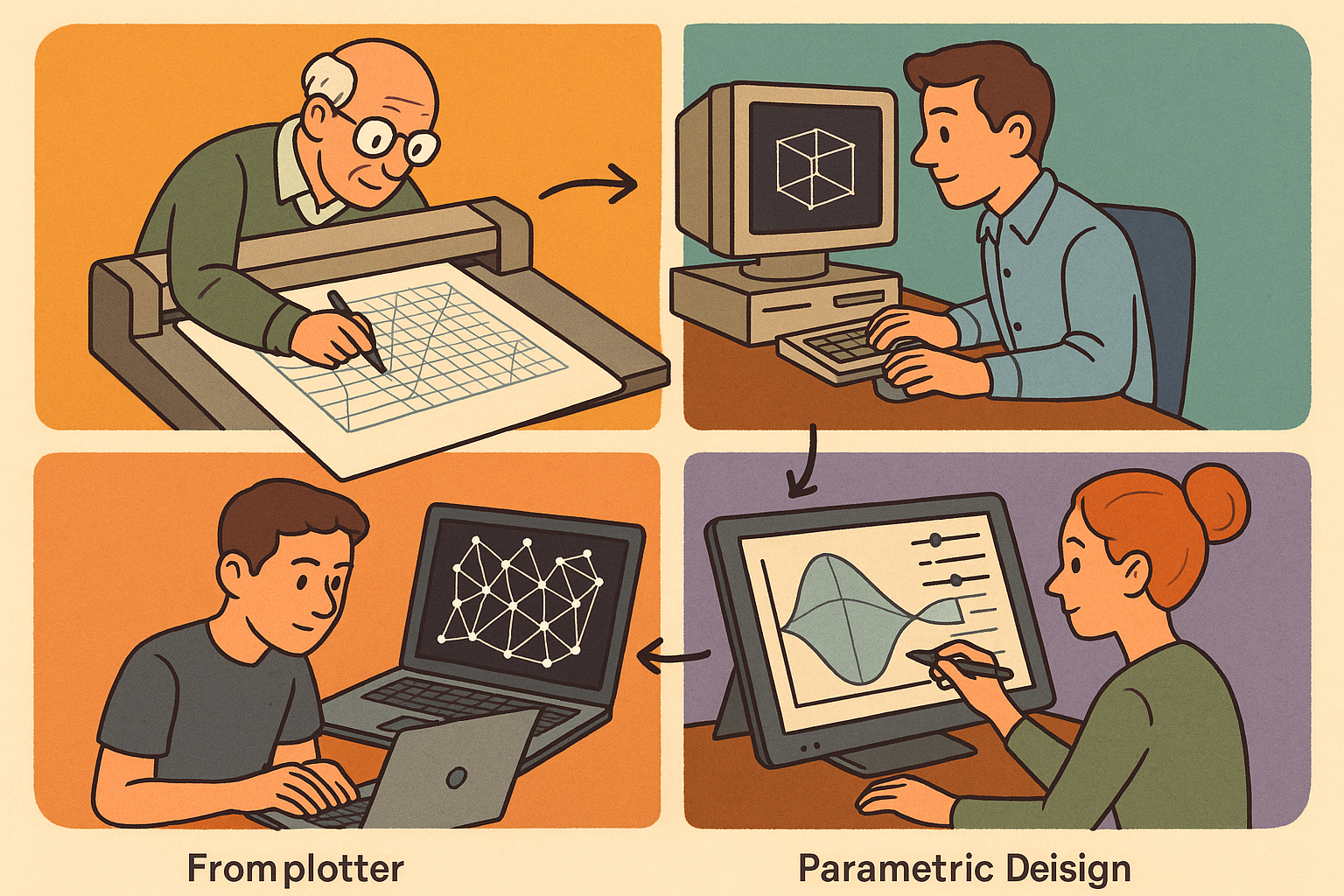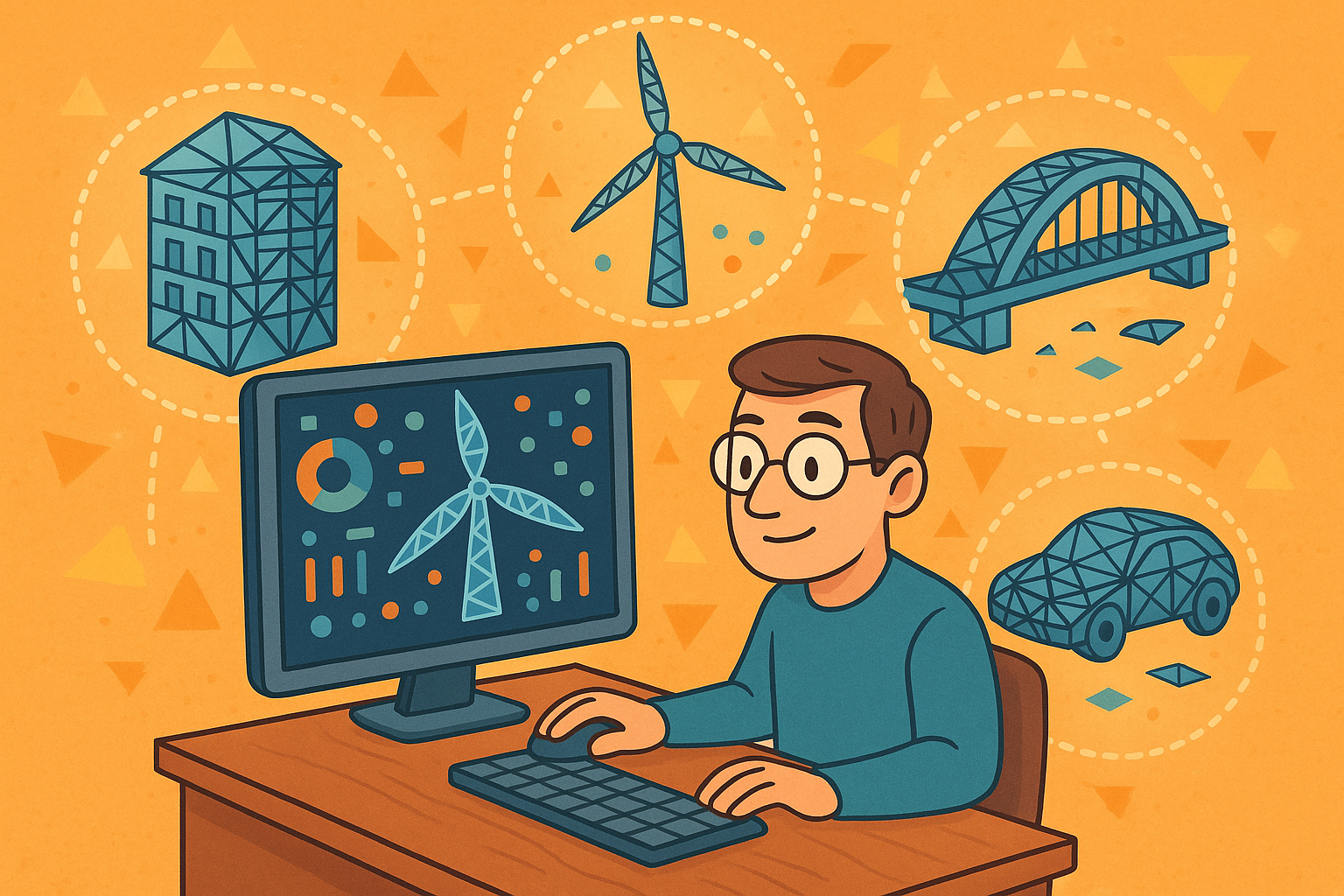Your Cart is Empty
Customer Testimonials
-
"Great customer service. The folks at Novedge were super helpful in navigating a somewhat complicated order including software upgrades and serial numbers in various stages of inactivity. They were friendly and helpful throughout the process.."
Ruben Ruckmark
"Quick & very helpful. We have been using Novedge for years and are very happy with their quick service when we need to make a purchase and excellent support resolving any issues."
Will Woodson
"Scott is the best. He reminds me about subscriptions dates, guides me in the correct direction for updates. He always responds promptly to me. He is literally the reason I continue to work with Novedge and will do so in the future."
Edward Mchugh
"Calvin Lok is “the man”. After my purchase of Sketchup 2021, he called me and provided step-by-step instructions to ease me through difficulties I was having with the setup of my new software."
Mike Borzage
Evolution of User Interfaces in Design Software: From Command Lines to Immersive VR and AI Integration
August 21, 2024 3 min read


Historical Perspective on User Interfaces in Design Software
The evolution of user interfaces (UIs) in design software has been nothing short of revolutionary. To appreciate the current state and future potential of these interfaces, it is crucial to understand their historical progression.
Early Days of Design Software
The journey began in the 1960s and 1970s with the introduction of Computer-Aided Design (CAD). During this era, design software was primarily text-based, and interactions were facilitated through command-line inputs. The UIs were stark and functional, demanding a comprehensive understanding of command syntax from users.
Graphical User Interface (GUI) Revolution
Significant changes emerged in the 1980s and 1990s with the advent of the WIMP (Windows, Icons, Menus, Pointer) model. This transformation made design software much more user-friendly and accessible. The GUI revolution brought about:
- Enhanced usability through visual elements
- Improved productivity by simplifying complex tasks
The impact of GUI on usability and productivity cannot be overstated. It allowed designers to focus more on creativity and less on technicalities, significantly streamlining their workflows.
First Generation of 3D Interfaces
The late 1990s and early 2000s saw the emergence of 3D modeling software. This period marked the introduction of basic 3D navigation tools and interfaces, laying the groundwork for modern 3D design environments. These early interfaces provided:
- Fundamental 3D manipulation capabilities
- Initial tools for spatial visualization
These developments were pivotal in transitioning from 2D to 3D design paradigms, setting the stage for more sophisticated tools and interfaces.
Modern User Interface Innovations
In recent years, user interface innovations have significantly enhanced the functionality and user experience of design software.
Touch and Gesture-Based Interfaces
The 2010s witnessed the rise of touchscreens and tablets, leading to the integration of multi-touch and gesture controls in design software. This evolution has enabled more intuitive interactions, allowing users to manipulate design elements directly with their hands.
Key advancements include:
- Responsive touch interfaces
- Gesture-based commands for enhanced control
Adaptive and Context-Sensitive Interfaces
The development of adaptive and context-sensitive interfaces has further revolutionized user interactions. These interfaces can dynamically adjust to user needs and tasks, often leveraging machine learning to predict and streamline user actions. The benefits are manifold:
- Increased efficiency through task-specific tools
- Reduction in cognitive load by minimizing unnecessary options
Customization and Flexibility
Modern design software offers unprecedented levels of customization and flexibility. Users can often personalize their UIs through modular and customizable elements, ensuring the interface aligns with their specific workflows and preferences. Features include:
- User-driven interface personalization
- Modular UI components for tailored experiences
The Role of Emerging Technologies in Shaping User Interfaces
Emerging technologies are playing an increasingly critical role in defining the future of design software UIs.
Virtual Reality (VR) and Augmented Reality (AR)
VR and AR technologies have introduced immersive design environments, significantly enhancing spatial understanding and collaboration. These technologies offer designers the ability to interact with their creations in a more lifelike manner, leading to better design outcomes.
Key impacts include:
- Enhanced spatial visualization
- Improved collaborative design processes
AI-Powered Assistants and Automation
The integration of AI in design software has automated repetitive tasks and facilitated decision-making. AI-powered assistants can handle mundane tasks, allowing designers to focus on more creative aspects. Additionally, natural language processing enables voice-command interfaces, making interactions more seamless and intuitive.
Haptic Feedback and Tactile Interfaces
Haptic feedback and tactile interfaces are enhancing the interactive experience in design software. These technologies provide physical feedback to users, improving precision and control. Potential applications include:
- Enhanced design precision
- Improved user feedback mechanisms
Future Trends and Predictions
The future of user interfaces in design software looks promising, with several trends poised to shape the next generation of tools.
Cross-Platform and Cloud-Based Interfaces
As design tools become increasingly cross-platform and cloud-based, seamless integration across various devices and platforms is becoming essential. Cloud computing is playing a critical role in enabling collaborative design efforts, allowing multiple users to work on the same project in real-time.
Enhanced Interactivity and User Experience (UX)
Continuous improvements in user engagement and satisfaction are anticipated, driven by advancements in AI and user experience design. AI-driven enhancements are expected to further refine UIs, ensuring they are more intuitive and user-friendly.
Integration of Biometric and Wearable Technologies
The integration of biometric data and wearable technologies presents intriguing possibilities for user interface innovation. By using biometric data, design software can tailor the user experience to individual needs. Wearable tech also opens up new methods of interaction, enhancing the overall design process.
In conclusion, understanding the historical context and current innovations in user interfaces for design software provides valuable insights into their future trajectory. As technologies continue to evolve, the potential for creating more efficient, intuitive, and immersive design environments grows exponentially.
Also in Design News

Design Software History: From Plotters to Procedural Intent: A Technical History of Generative and Parametric Design Software
January 04, 2026 13 min read
Read More
Semantic Meshes: Enabling Analytics-Ready Geometry for Digital Twins
January 04, 2026 12 min read
Read MoreSubscribe
Sign up to get the latest on sales, new releases and more …



